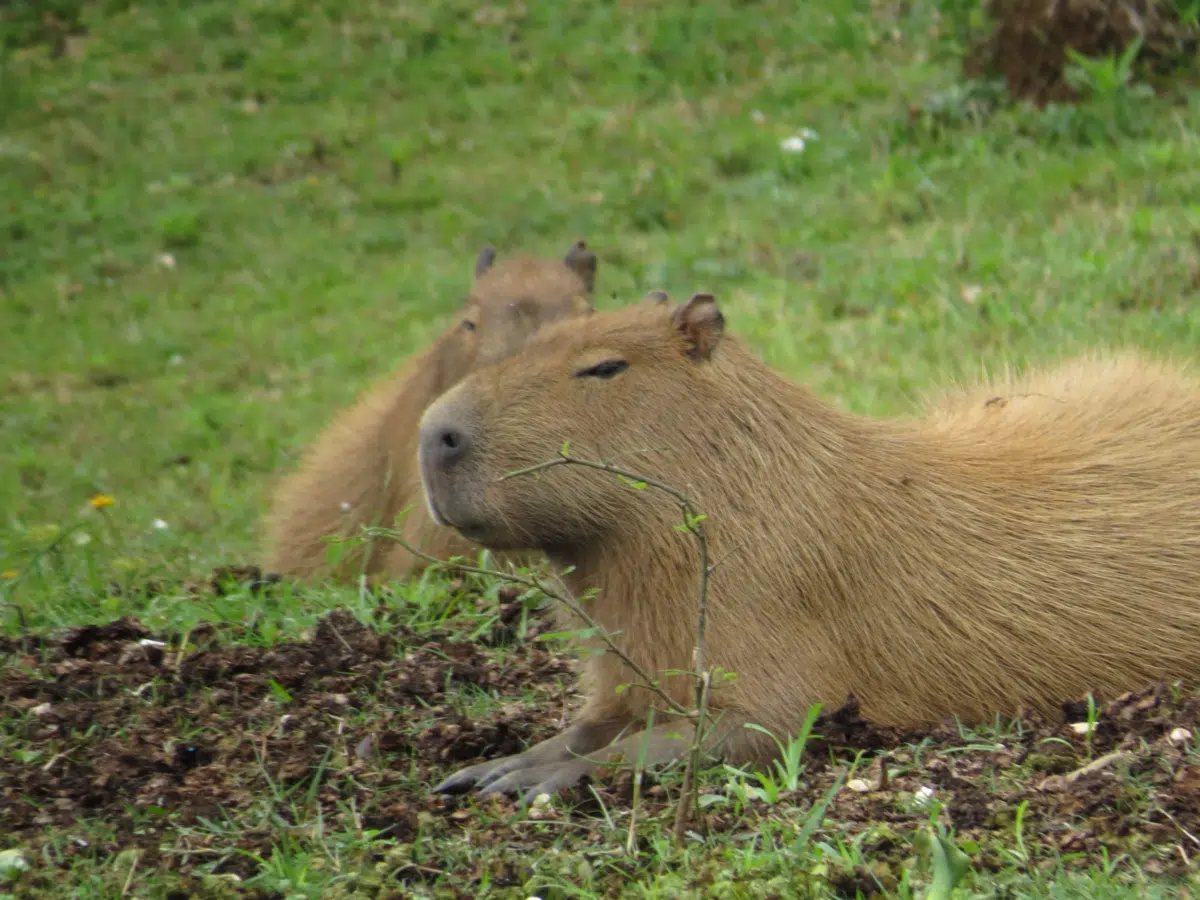In the heart of South America, amidst the enchanting landscapes of marshes, jungles, and grasslands, resides a fascinating creature that reigns as the largest rodent on the planet—the capybara (Hydrochoerus hydrochaeris). In this article, we dive into the captivating world of these semi-aquatic giants, exploring their physical prowess, unique behaviors, and the challenges they face in the ever-changing landscape.
The Rodent Royalty: Capybaras Rule the Grasslands
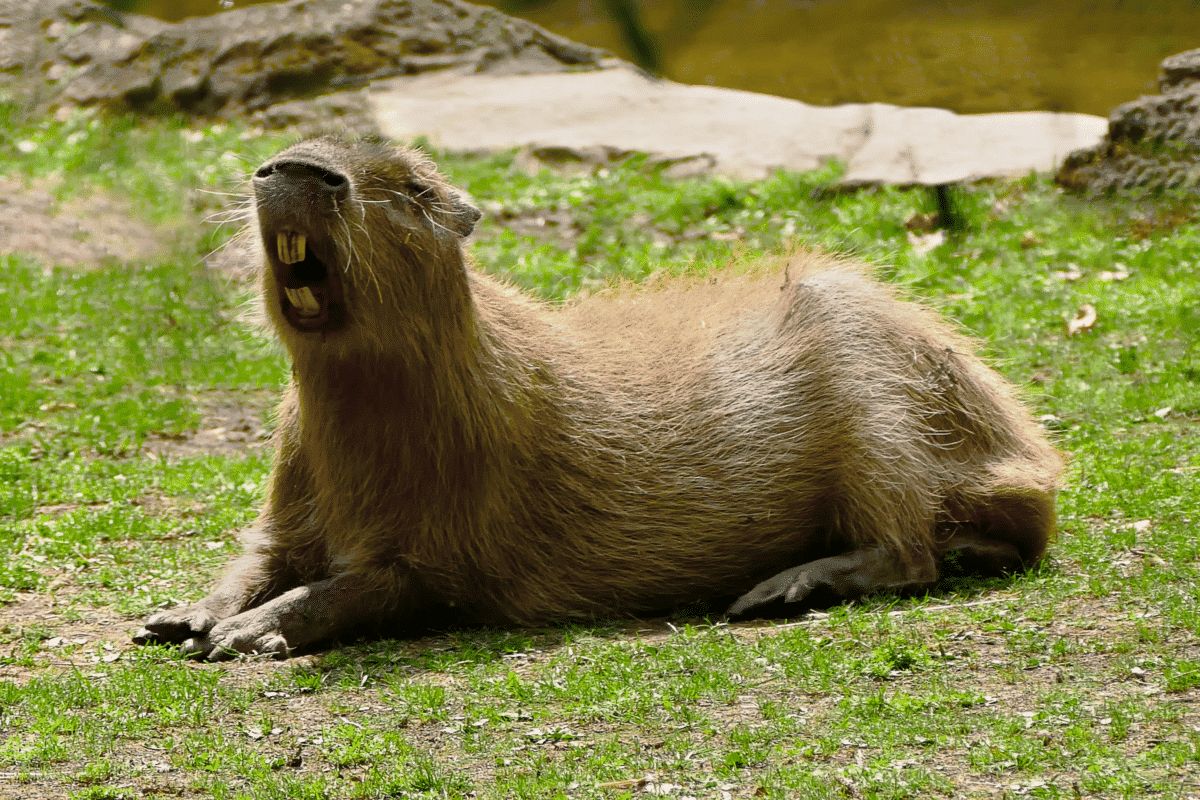
Yes, capybaras are indeed rodents, but not your typical squeaky companions. These colossal creatures boast an average weight of 108 pounds, comparable to a fully-grown wolf. As the last representatives of a lineage of massive grass-eating rodents in South America, capybaras stand out as remarkable survivors in the evolving tapestry of the animal kingdom.
The Amphibious Lifestyle: Land and Water in Perfect Harmony
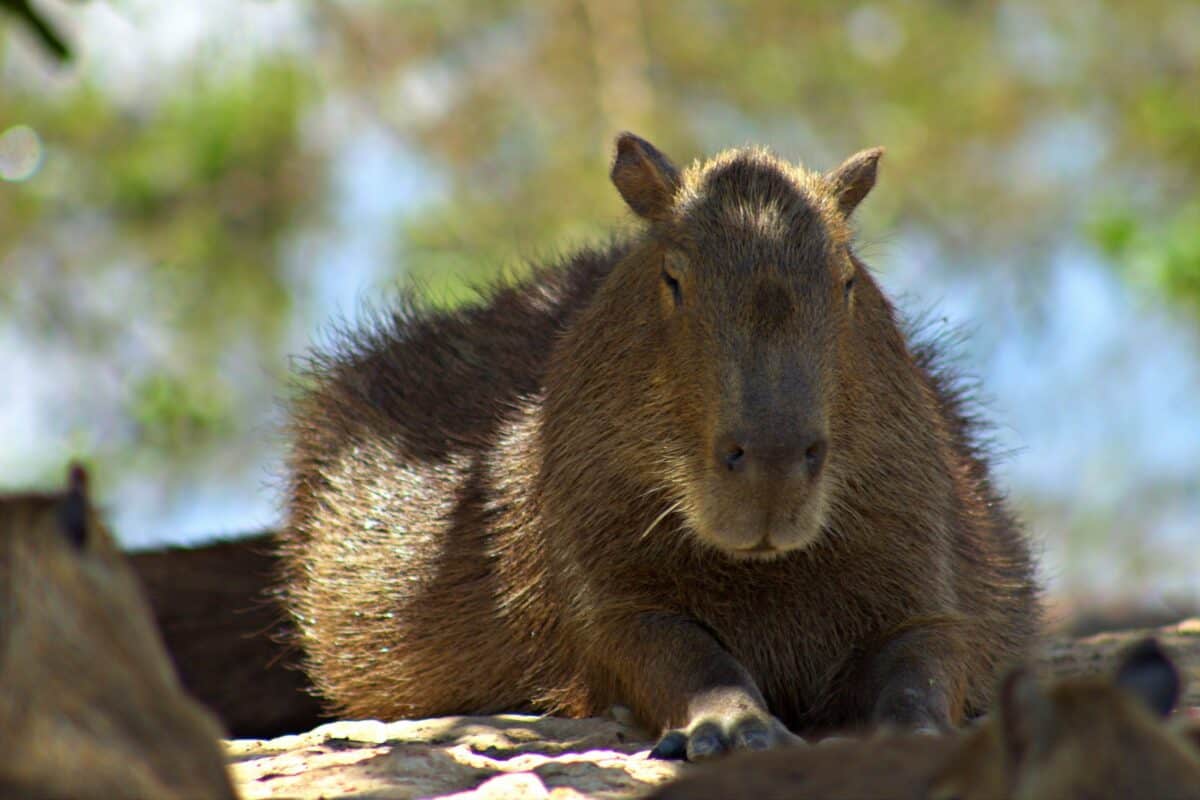
Capybaras are true masters of balance, leading a semi-aquatic lifestyle that spans both land and water. Webbed feet, reminiscent of frogs and ducks, enable them to navigate water bodies with astonishing speed. Their eyes, ears, and nostrils perched atop their heads serve as strategic adaptations, allowing them to stay mostly submerged, hidden from the prying eyes of predators. It’s an amphibious ballet, with capybaras effortlessly switching between their watery havens and the solid ground.
Seasons’ Secrets: Capybaras’ Digestive Flexibility
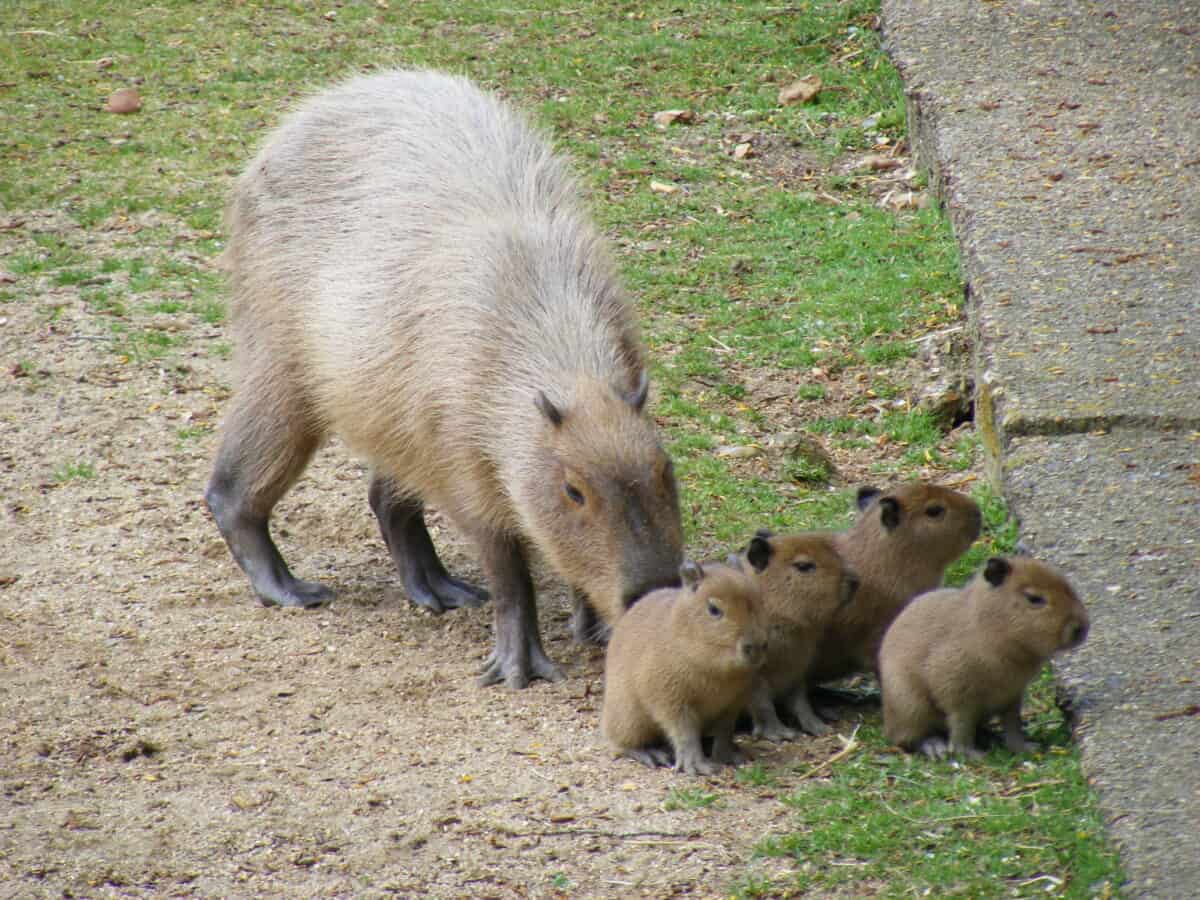
Surviving the distinct challenges posed by dry and wet seasons, capybaras showcase an ingenious adaptation. Their digestive tract is a marvel, adjusting to the changing nutritional content of grasses. In the dry season, their small intestine expands, enhancing nutrient absorption, while contracting during the wet season when bountiful vegetation abounds. This flexibility ensures their resilience in the face of Mother Nature’s dynamic moods.
Food And More
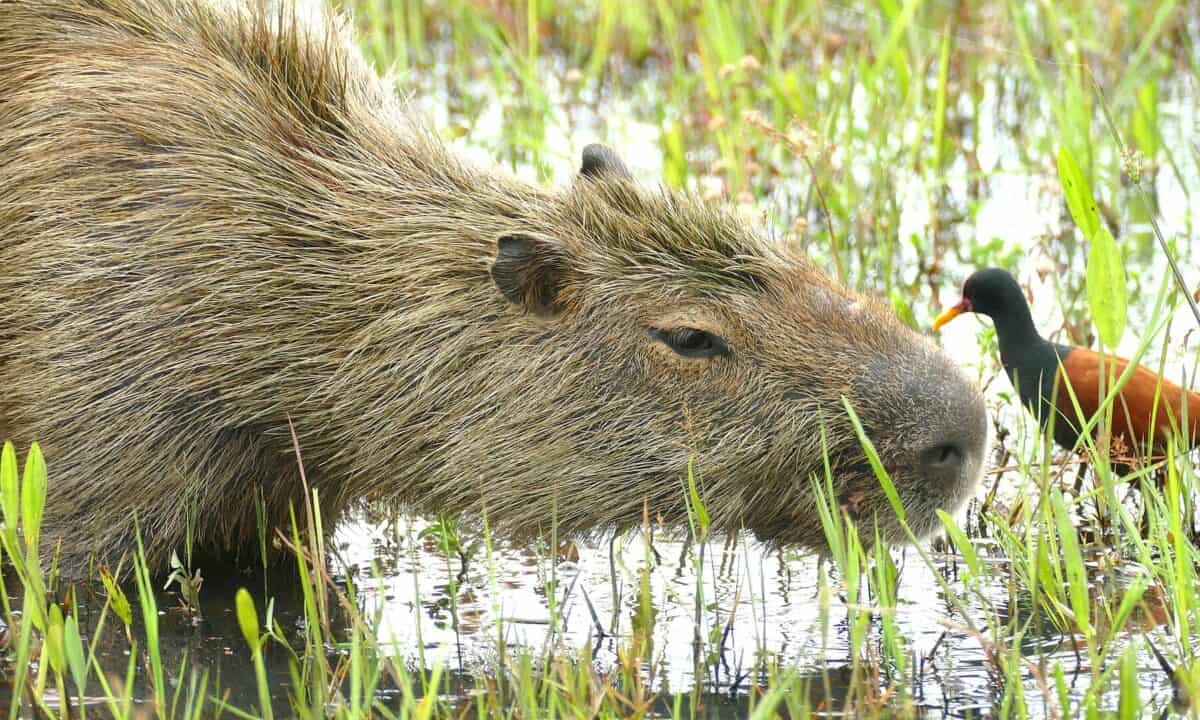
In the peculiar morning routine of capybaras, a unique habit emerges—they snack on their own feces. This seemingly unappetizing behavior, known as coprophagy, serves a purpose. By re-digesting their food, capybaras maximize nutrient absorption, extracting every bit of sustenance from their plant-based diet. It’s a recycling mechanism that showcases the resourcefulness of these colossal rodents.
As herbivores with a penchant for grasses and aquatic plants, capybaras play a crucial role in the intricate web of the food chain. However, their large size doesn’t make them invincible. Jaguars and pumas lurk as potential predators, posing a constant threat to these gentle giants. It’s a survival dance where the capybaras’ watchful eyes are their shield against becoming a savory feast for the big cats.
Perils of Progress: Human-Induced Threats to Capybaras
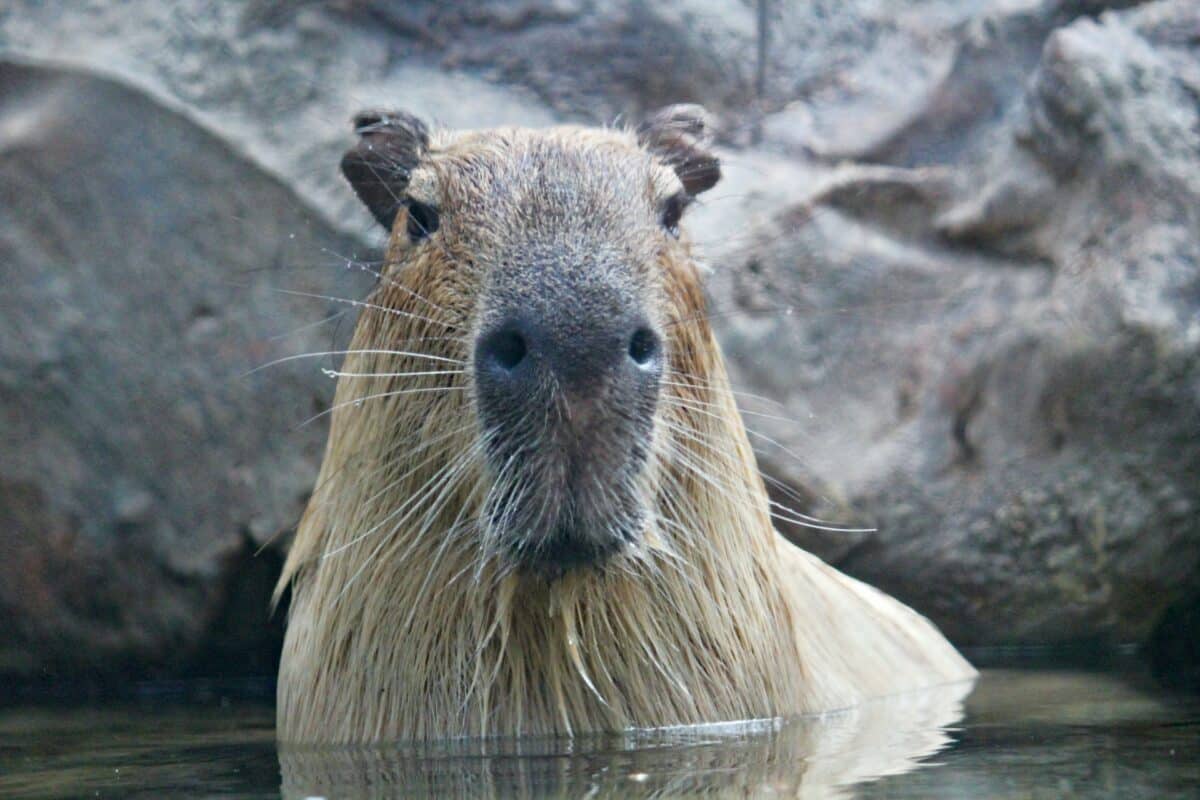
Despite their resilience, capybaras face significant challenges from human activities. Evidently, deforestation, driven by the conversion of natural habitats into crop fields and cattle ranches, poses a direct threat to their existence. Overhunting exacerbates their plight, casting a shadow on the future of these remarkable creatures.
Finally, as custodians of our planet, it is our responsibility to safeguard the habitats that capybaras call home. Organizations like the World Wildlife Fund (WWF) are actively engaged in preserving these vital ecosystems, working towards a harmonious coexistence between humans and capybaras. By fostering awareness and implementing conservation measures, we can ensure that the capybara, the giant among rodents, continues to grace our world for generations to come.
Thank you for following along with this article –
Next up in the animal kingdom:
- Bald Eagle Family Expand Their Nest In California - April 24, 2024
- Firefighter Saves Abandoned Kittens Found Cuddling In Hoses - April 24, 2024
- Dolphins Get High Playing Catch With A Pufferfish - April 24, 2024

